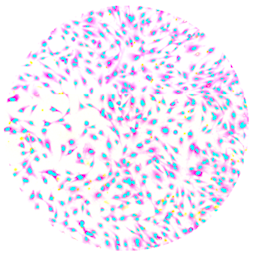Strategy to replace animal-derived ECM by a modular and highly defined matrix
Main Article Content
Abstract
Many extracellular matrices (ECM) used for modern cell culture are derived from animals. An alternative approach is the recombinant production of individual matrix protein components. A further development of this strategy uses a constant core protein polymer that is modifiable with functional domains of various ECM proteins. This way, a single, highlydefined ECM system could be used for a large variety of cell types. Self-assembling protein domains from human muscle sarcomeres, termed ZT material (ZT), have been shown to be suitable for this modular approach of generating ECMs. We explored in a proof-of-concept study whether ZT modified with the fibronectin 10 domain (ZTFn10) is able to substitute bovine serum-derived fibronectin as a coating for neural crest cell (NCC)-based toxicity testing. Human NCCs were generated from pluripotent stem cells and used in the automated version of an NCC migration assay (cMINC). ZTFn10, but not the unmodified core material (ZT), allowed high migration activity. The classical cMINC setup, with bovine fibronectin coating, was used as positive control, and detailed analysis of NCC migration by time-lapse recording indicated that the novel ECM fully matched the bioactivity of the traditional ECM. A final set of experiments showed that various positive controls of the cMINC assay (PCB180, LiCl, cytochalasin D) showed nearly identical inhibition curves on the traditional and the novel ECM. Thus, the cMINC, and possibly other bioassays, can be performed with a ZT-based ECM instead of traditional animal-derived protein coatings.
Article Details

This work is licensed under a Creative Commons Attribution 4.0 International License.
Articles are distributed under the terms of the Creative Commons Attribution 4.0 International license (http://creativecommons.org/licenses/by/4.0/), which permits unrestricted use, distribution and reproduction in any medium, provided the original work is appropriately cited (CC-BY). Copyright on any article in ALTEX is retained by the author(s).


